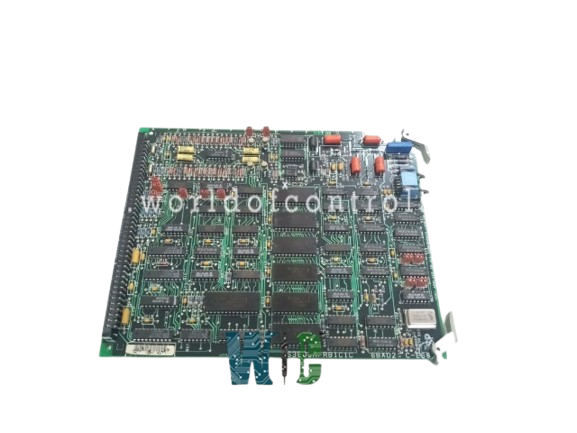
World Of Controls understands the criticality of your requirement and works towards reducing the lead time as much as possible.
DS3800HPRB1C1B - Pulse Rate Input Card is available in stock which ships the same day.
DS3800HPRB1C1B - Pulse Rate Input Card comes in UNUSED as well as REBUILT condition.
To avail our best deals for DS3800HPRB1C1B - Pulse Rate Input Card, contact us and we will get back to you within 24 hours.
SPECIFICATIONS:
Part Number: DS3800HPRB1C1B
Manufacturer: General Electric
Series: Mark IV
Product Type: Pulse Rate Input Card
Analog output current: 0-20 mA
Power Requirements: +5 V dc
Operating temperature: -30 to + 65 �C
Size: 17.8 cm wide x 33.02 cm
Repair: 3-7 days
Availability: In Stock
Country of Origin: United States
FUNCTIONAL DESCRIPTION:
DS3800HPRB1C1B is a Pulse Rate Input Card manufactured and designed by General Electric as part of the Mark IV Series used in GE Speedtronic Gas Turbine Control Systems. This test checks the four pulse rates to the analog input channels and the generator and line bus input channels on the HPRB card. The source signals are a pulse rate from the HXPD timer, a pulse rate from the HPRB timer, P15V, N15V, and ACOM. Cable D routes these source signals from R, S, T SEM to the NATO, where they are conditioned. Cable A from JE of the NATO feeds the conditioned signals back through R, S, T, and SEM to simulate the generator and line inputs to the HPRB card. Cable A from JG of the NATO feeds the conditioned signals to the four pulse rate input channels on the HPRB card.
FUNCTIONS OF PULSE RATE INPUT CARD:
The source signals are a pulse rate from the HXPD timer, a pulse rate from the HPRB timer, PlW, N15V, and ACOM. Cable D routes these source signals from R, S, T, and SEM to the NATD, where they are conditioned. Cable A from JG of the NATD feeds the conditioned signals to the four pulse rate input channels on the HPRB card. A pulse rate to analog converter on the HPRB card feeds a signal (EXT) via module backplane wiring to the pulse rate input to the second control amplifier on the HSAA card in slot 20.
This test checks the two LVDT feedback input channels on the HSAA card and the four pulse rate input channels on the HPRB card. The source signal is a 7.2 VRHS, 3.2 KHZ sine wave generated by the oscillator on the HSAA card. Cable B routes the source signal to a voltage divider on the NATD, where it is conditioned. The source signal may be monitored with a voltmeter connected between TP3 and TP4 of the NATD. Cable 8 feeds the conditioned signal from the NATD to the three LVDT inputs on the HSAA card. Cable A feeds the conditioned signal from the NATO to the four pulse rate channels on the HPRB card.
WOC has the largest stock of OEM Replacement Parts for GE Speedtronic Gas Turbine Control Systems. We can also repair your faulty boards and supply unused and rebuilt boards backed up with a warranty. Our team of experts is available around the clock to support your OEM needs. Our team of experts at WOC is happy to assist you with any of your automation requirements. For pricing and availability on parts and repairs, kindly contact our team by phone or email.
What is a Pulse Rate Input Card?
A Pulse Rate Input Card is an electronic module designed to receive and interpret digital pulse signals from various field devices such as flow meters, speed sensors, or encoders. It converts these high-frequency pulses into data that can be read and processed by control systems, typically in industrial automation and turbine control applications.
What is the typical input voltage range supported by a Pulse Rate Input Card?
Most pulse rate input cards support a wide range of input signal levels, such as TTL (0�5V), CMOS (0�3.3V), and industrial standard 24V DC signals. Some models may include configurable input thresholds via software or jumpers.
What is the maximum input frequency the card can process?
This depends on the model, but high-speed cards typically support up to 100 kHz or more. For standard industrial applications, a range of 0�10 kHz is common. Always refer to the datasheet for precise frequency specs.